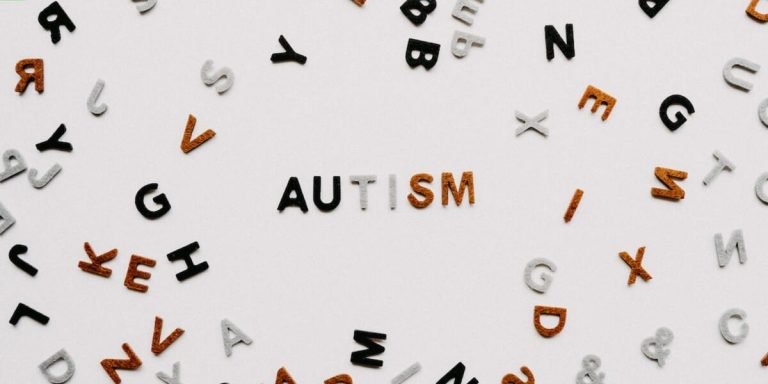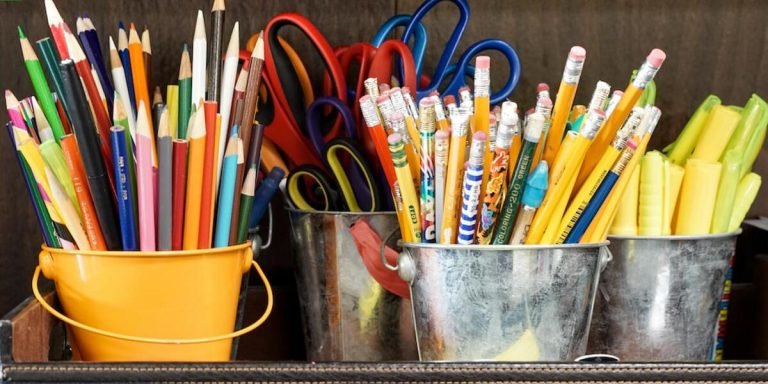SLD Special Education: Understanding Its Impact on Childhood Learning
Children often face various challenges as they embark on their learning journey. These hurdles can be especially high for children with Specific Learning Disabilities (SLD). SLD special education is a field that focuses on modifying teaching methods and school environments to meet the individual needs of these students, thus ensuring continuous growth in their intellectual skills.
The impact of this tailor-made form of instruction cannot be overstated. This curated approach not only addresses academic struggles but also paves ways towards effective social interactions, personal development, self-esteem building and overall improvement in quality of life for kids grappling with specific learning disabilities. Delving into “Special Education Resources and Support” will surely assist parents or educators looking forward to creating meaningful educational experiences for such young learners.
Did you know?
While many may not know this, students with specific learning disabilities (SLD) account for the largest proportion of all children receiving special education services in U.S. public schools – nearly 40%! This significant number underscores the immense impact SLD has on childhood learning.
Identifying and Understanding SLD: A Guide for Educators and Parents
Identifying and understanding Specific Learning Disability (SLD) is a crucial aspect of special education. In today’s digital age, technology integration in education has made it easier for educators and parents to identify SLD in children earlier than ever before. Educational technologies such as learning management systems, data analysis software, and diagnostic tools provide an invaluable resource that allows early recognition of potential learning difficulties.
Understanding the issue revolves around familiarizing oneself with its many forms – dyslexia, dyscalculia or dysgraphia among others. These are not manifested through obvious signs like most physical disabilities but subtly affect important aspects of a child’s life: reading efficiency; numerical comprehension; writing coherence etcetera. Digital educational resources play pivotal roles here by providing detailed assessments which help determine these nuances swiftly yet accurately.
For effective support and intervention strategies targeted towards children diagnosed with SLDs, once again we find our ally in advanced technological solutions available nowadays – be it assistive tech like speech-to-text apps or personalized online tutoring tailored according to each learner’s unique needs.
Incorporating technological advancements into traditional teaching methods can bridge gaps between learners’ varying academic abilities thereby creating inclusive classrooms where every child achieves their full potential without feeling alienated due to disparities inherent within conventional schooling systems.
Recognizing Signs of Specific Learning Disabilities (SLD)
Recognizing signs of Specific Learning Disabilities (SLD), particularly in special education, is crucial for both parents and educators. When we understand the various indicators associated with SLD, early interventions can be implemented to aid a child’s learning process efficiently.
In today’s digital era where technology integration has an essential role in our lives and more so in education circles, several resources support children suffering from specific learning disabilities or “sld special education”. The utilization of these technologies helps considerably improve their academic performance by catering to different kinds of learners according to their unique needs.
The first sign that might indicate a need for sld special education is when you observe difficulties related to reading or language-based tasks. Students may struggle with decoding words, spelling accuracy, word recognition skills along with problems understanding sentence structure or grammar rules which are the building blocks needed for reading comprehension abilities and written expression.
Secondly, issues regarding mathematical reasoning could also be another symptom indicative of learning disabilities. This manifests as difficulty applying math concepts or problem-solving strategies effectively despite having understood them theoretically well enough initially.
Moreover technological tools exist nowadays like speech-to-text apps assisting students who have trouble with note taking due to slow writing speeds caused by dyspraxia – one type among many forms under SLD umbrella term .
The Importance of Early Diagnosis in Special Education
In the context of special education, an early diagnosis plays a crucial role in shaping a child’s future. Particularly when it comes to SLD (Specific Learning Disabilities), having an early understanding can make all the difference. This is where special education resources and support enter, providing vital assistance to educators and parents navigating through this journey.
Early detection of any signs related to SLD helps children gain timely access to specialized instructions customized as per their learning style. Early intervention also minimizes the potential for academic failure by ensuring that students are not left behind due to unaddressed needs.
Technology plays an instrumental part in facilitating such interventions today. Be it adaptive software designed specifically for kids with learning disabilities or assistive devices enabling them cope up with everyday activities – technology has given a fresh lease of life into “SLD Special Education”. Not only does tech augment teaching methods but enables tracking progress efficiently too- thus making accurate evaluations easy!
Parents should be encouraged first-hand observers because they often notice differences long before anyone else does! Their observations would then serve as valuable inputs towards forming effective individualized educational plans (IEPs). IEPs serve as strategic roadmaps outlining how best we could navigate around each student’s unique challenges thereby creating conducive environments promoting personal growth alongside academics.
Strategies for Effective Instruction in SLD Special Education
In the world of SLD (Specific Learning Disabilities) special education, effective instructional strategies are being transformed by technology integration. In this digital age, utilizing technology not only enhances knowledge acquisition but also paves the way for a more inclusive learning environment that addresses individual learning needs.
Educational technologies enable teachers to offer differentiated instruction, crucial for teaching students with specific learning disabilities. Teachers utilize interactive platforms and applications that present information through audio, visual, or tactile means—making lessons appealing and accessible to all learner types. This approach extends beyond computer use in class; it includes integrating educational software into lesson plans, supporting students with adaptive tech tools tailored for special needs, and using multimedia resources to meet curriculum objectives effectively.
Moreover, technological advancements provide meaningful support system in the realm of SLD special education. Numerous online forums have sprung up where educators can share their experiences and resources about educating children having Specific Learning Disabilities – offering comfort while also sparking innovative ideas regarding effective instruction methods at home or school setting alike.
Differentiated Teaching Techniques to Support Diverse Learners
The principle of differentiated teaching, which underlies special education programs such as SLD Special Education, revolves around customizing lessons to meet the unique needs and learning styles of each student. It is particularly effective for diverse learner groups where children grasp concepts at varied paces and through different modalities. Here are some techniques that educators can employ.
1. **Differentiation by Content**: Tailoring what students learn according to their individual readiness level is crucial in an inclusive classroom setting like sld special education. By offering simplified versions or providing supplemental activities with complex content, teachers cater to diversified learning speed without compromising anyone’s overall progress.
2. **Use Technology Tools:** Leveraging modern educational technology tools immensely enhances differentiated instruction strategies used within sld special education classrooms in 2023.
Interactive whiteboards facilitate visual presentations while assistive technologies support individuals with certain physical limitations or speech impairments.
3. **Varying Learning Environments**: Apart from structured desk-bound sessions; experiential settings including outdoor classes or group collaboration zones stimulate hands-on learners’ engagement effectively taking into account their specific preferences and abilities.
Incorporating Technology and Assistive Tools in the Classroom
With the ever-evolving landscape of technology, capitalizing on it to enhance sld special education learning experiences has become increasingly vital. There’s a range of ways we can incorporate technology and assistive tools in the classroom for effective instruction.
Through instructional software designed specifically for children with specific learning disabilities (SLD), teachers are able to customize their teaching methods according to each student’s unique needs. Offering interactive lessons that engage students actively will make learning more enjoyable and easier.
Furthermore, digital textbooks not only save paper but also come equipped with features such as text-to-speech capabilities which offer significant help especially when dealing with reading-related SLDs. Such customized readings allow learners with SLDs grasp materials at their own pace without feeling pressured or left behind.
Collaborative Efforts Toward Inclusive Education
In the current digital era, signifies a growing paradigm to make special education more accessible and efficient. The integration of technology in this field is giving rise to inclusive classrooms where students with specific learning disabilities (SLD) are not just merely accommodated but also empowered.
Exclusive software applications and online platforms have made it possible for these students to actively participate in regular school curriculum. These tools offer them personalized ways of grasping complex concepts that otherwise may prove difficult due to their SLD. They encourage collaboration among all learners irrespective of their abilities, bridging gaps between typical peers and those with special needs.
Perhaps one notable aspect emerging from this trend is how educators are rallying behind implementing such technologies within the classroom environment – they recognize its potential in bringing about substantial positive changes towards inclusion efforts for SLD-oriented special education. As we forge ahead into 2023, let’s embrace technological innovation as an enabler rather than a disruptor – enriching lives through better learning experiences crafted specifically around varying student needs.
Fostering Home-School Partnerships for Continued Support
Fostering home-school partnerships is a critical component in enhancing the learning experience of students, especially for those requiring sld special education. It takes collaborative efforts to ensure inclusive and supportive educational environments are provided.
Parents play an indispensable role when it comes to integrating technology into their child’s curriculum. More than ever, in 2023, interactive tech tools have become essential resources that facilitate personalized instruction tailored to meet each student’s needs.
Encouraging parents’ involvement does not only mean keeping them informed about academic activities but also incorporating them as active participants in strategizing individualized education plans (IEPs). This could range from setting up designated workspaces at home equipped with necessary assistive technologies or participating actively during virtual group discussions utilizing platforms like Google Meet or Zoom.
Moreover, educators can provide regular updates on their child’s progress through digital portfolios enabling real-time monitoring and providing constructive feedback. Apps like Sesame Street Family Playground offer a wealth of resources such as games and reading material designed explicitly for children receiving sld special education taking significant strides towards maintaining continuity between school-based structured learning and informal homely settings.
In addition to leveraging these technological capabilities,it is equally crucial ensuring easy accessibility for families who might lack requisite technical knowledge using user-friendly software interfaces while offering demonstrations or online training sessions if needed.
Leveraging Community Resources to Enhance Learning Opportunities
Today’s educational landscape has seen a vast shift towards inclusive learning, particularly for children with specific learning disabilities (SLD). As part of this broader initiative towards inclusivity in education, it becomes crucial to look beyond traditional school boundaries and leverage community resources that can enhance SLD special education.
For instance say there’s an art project – nothing supports experiential learning better than taking a trip down to your local museum! Children get hands-on exposure which effectively reinforces what they learned within four walls. Community partnerships like these not only enrich student knowledge but also boost their social interaction skills.
Digital technology is another potent tool being integrated in current year 2023 into classrooms as well as at home study environments making distance less of an impediment. Parent forums or chat groups are more common now than ever before—sharing tips and advice amongst each other on how best one can cope up with challenges faced by children requiring special educational attention; offering practical solutions often from first-hand experience!
Conclusion
In the journey of comprehending SLD special education, always bear in mind that every child’s learning path is unique and deserves bespoke attention. Acceptance and understanding are key; it unravels a world of potential for these young learners to prosper academically, socially, and emotionally. This may be a challenging chapter for both parents or educators alike, but trust us when we say – you are not alone on this.
We encourage our readers to dig deeper into our website. It is laden with valuable resources aimed at empowering diligent parents like yourselves through your quest towards effective childhood education strategies. By exploring more about how to teach children effectively within their individual capacities as well as seeking further support if needed ensures they stand the best chance at success – because each one aspiring learner deserves nothing less than just that!







